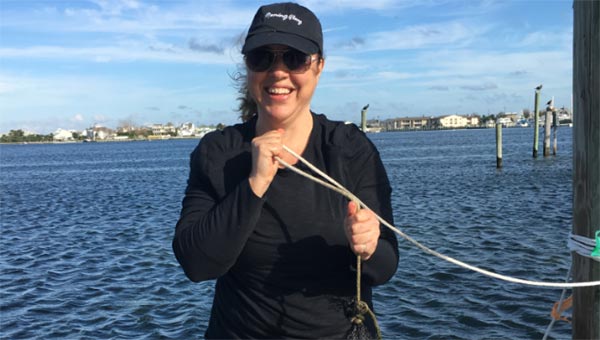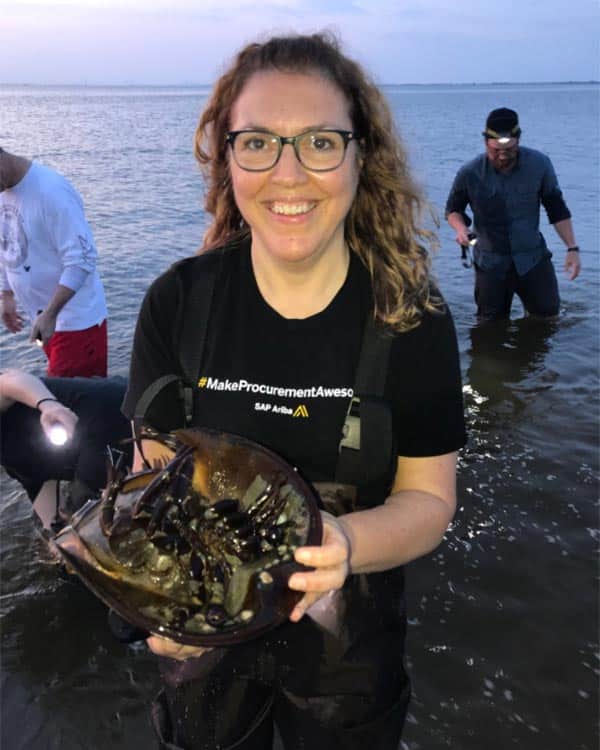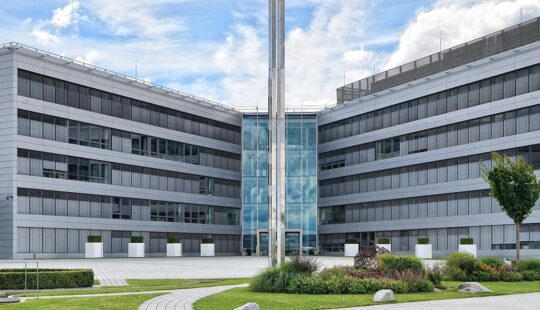A collective conscious effort is needed to preserve the world’s coastlines and their ecosystem. Understanding the difficult challenges coastal wildlife faces, SAP Ariba Communications Lead Jennifer Zarcone has channeled her desire to give back and preserve coastal wildlife by starting the non-profit Save Coastal Wildlife, dedicated to education, research, and preservation of coastal wildlife.
Growing up by the beach on Long Island, New York, Zarcone has loved wildlife and the coast from an early age. Seven years ago, she bought her first home and moved to the New Jersey shore. Hurricane Sandy then tore through the state and left almost 8 million people without power, sent communities into states of emergency, and, for the first time since 1888, forced the New York Stock Exchange (NYSE) to remain closed for several consecutive days due to weather.
After a storm like that, Zarcone says, “You are very aware of the power of the ocean and the vulnerability of the coastal region.”
Long before the hurricane, she had made volunteering an integral part of her life, with a firm belief in the saying, “You make a living by what you do but you make a life by what you give.” Her experience growing up by the coast and with Hurricane Sandy made it clear that volunteering for the health of the coastline would be a fantastic fit – a natural way to give back even more.
Zarcone originally moved to the New Jersey shore with the dream of becoming an oyster farmer and got her shellfish husbandry certification. She found organizations in her area that did oyster restoration research and started connecting. In 2015, Zarcone saw a Facebook post from Joe Reynolds, chair of the Bayshore Watershed Council, who was looking for a seining partner for its annual Seine the Bay event. After reaching out and spending the day going up and down the Raritan Bay seining, they became fast friends. Zarcone agreed to join him for horseshoe crab monitoring and started going to council meetings.
 Zarcone and a core group from the council then decided they would start a non-profit organization to do more, and formed the board of directors for Save Coastal Wildlife last March. They saw a need for a non-profit that could, as she puts it, “Speak for the actual wildlife and educate people along the coast about how to fish with respect and gratitude for the environment.”
Zarcone and a core group from the council then decided they would start a non-profit organization to do more, and formed the board of directors for Save Coastal Wildlife last March. They saw a need for a non-profit that could, as she puts it, “Speak for the actual wildlife and educate people along the coast about how to fish with respect and gratitude for the environment.”
Research and education regarding the coastline are needed because, as Zarcone points out, “For thousands of years people have fished to eat, but there is a balance that’s needed. We have tipped the scale in the wrong direction and this is affecting the wildlife, the entire ecosystem, our waterways, and all of us.”
Horseshoe crabs provide a shocking example of the situation, thanks to research by Save Coastal Wildlife. Eel fisherman use the crabs as bait, and since females are fattier, larger animals, fishermen target them excessively. As one of the oldest animals on the planet – traced back through geologic record to around 445 million years ago, 200 million years before dinosaurs existed – stark changes in the horseshoe crab population will have consequences on other organisms that have grown dependent on the crabs and their eggs over millions of years.
 On these stark changes, Zarcone shares, “On a single night we’ll pull hundreds of horseshoe crabs out of the water and there will be one female for every 50 males.” Although she notices the negative environmental changes and uses it as motivation for her non-profit’s initiatives, she also takes time to enjoy her experiences and draw inspiration from the beauty of the nature around her. “When you live inside a laptop, being able to unplug and pluck something right out of the water and say, ‘Look at this!’ is incredibly satisfying. It’s so important to be in touch with wildlife.”
On these stark changes, Zarcone shares, “On a single night we’ll pull hundreds of horseshoe crabs out of the water and there will be one female for every 50 males.” Although she notices the negative environmental changes and uses it as motivation for her non-profit’s initiatives, she also takes time to enjoy her experiences and draw inspiration from the beauty of the nature around her. “When you live inside a laptop, being able to unplug and pluck something right out of the water and say, ‘Look at this!’ is incredibly satisfying. It’s so important to be in touch with wildlife.”
When asked about how SAP measures up as far as enabling and supporting her, Zarcone feels extraordinarily fortunate. “At another company, I might not feel comfortable starting a non-profit because they might view it as distracting me from my work. But at SAP, I felt empowered and supported to volunteer and start Save Coastal Wildlife. Knowing it’s something I can openly do is awesome, because SAP knows it makes me a happier and more productive employee.”
When you have a passion for volunteering, the positive side effects are numerous as Zarcone finds her work with Save Coastal Wildlife and SAP benefit from each other. After plucking horseshoe crabs out of the bay, “I come back to work refreshed, knowing I have a full life giving back to something I’m passionate about. It gives me a better perspective every day.” Since she is also the only communications-oriented person on her non-profit team, she draws on her professional experience when writing grants, press releases, and social media content for Save Coastal Wildlife as its communications lead and secretary.
With more than a year under their belt, Save Coastal Wildlife and Zarcone are committed to continuing the interesting and impactful education and research on coastal wildlife. If you ever look out onto the New York Harbor or Jersey Shore under a full moon and see someone plucking horseshoe crabs out of the water, tagging them while they are trying to mate – which they don’t always appreciate – relax. It’s just Zarcone having a blast saving our coasts, one horseshoe crab at a time.



